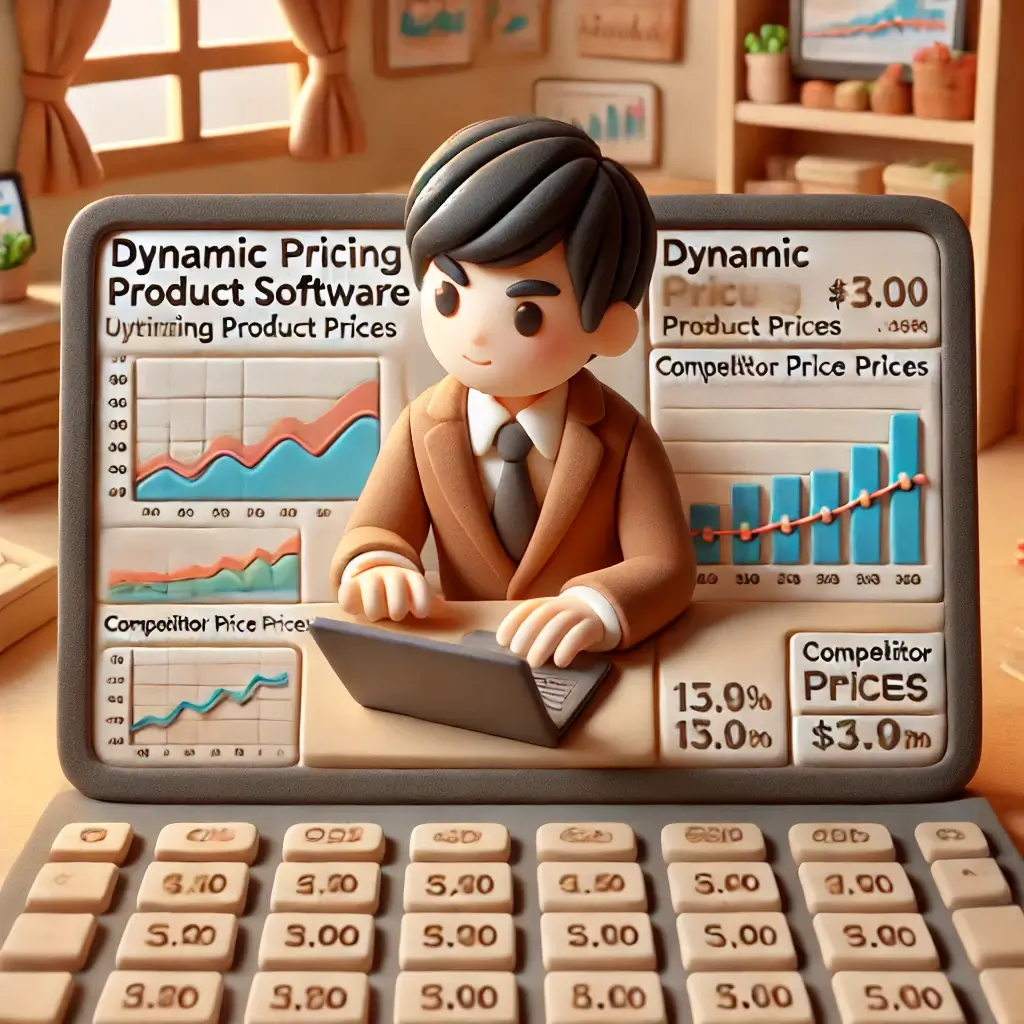Discover how small businesses and solo entrepreneurs can leverage dynamic pricing to stay competitive, increase revenue, and optimize sales. Learn key strategies, tools, and best practices for implementing dynamic pricing on Shopify, WooCommerce, and Amazon.
Introduction
In today’s fast-paced digital marketplace, pricing strategies can make or break a business. While major corporations like Amazon and Uber have mastered dynamic pricing, many small businesses and solo entrepreneurs are left wondering: Can I implement dynamic pricing in my own business? The answer is a resounding yes.
Dynamic pricing isn’t just for billion-dollar enterprises. With the right tools and strategies, even small eCommerce businesses can optimize their pricing to maximize revenue, improve competitiveness, and enhance customer satisfaction. This guide breaks down what dynamic pricing is, why small businesses should care, and how to effectively implement it on platforms like Shopify, WooCommerce, and Amazon.
What is Dynamic Pricing?
Dynamic pricing is a strategy where product prices fluctuate based on factors such as demand, competitor pricing, customer behavior, and market conditions. Unlike traditional fixed pricing, dynamic pricing allows businesses to adjust prices in real-time to capture maximum profit while staying competitive.
Common Types of Dynamic Pricing
– Demand-Based Pricing: Adjusting prices based on demand fluctuations. Example: Increased hotel rates during peak season.
– Competitor-Based Pricing: Setting prices based on competitor price movements.
– Time-Based Pricing: Adjusting prices based on the time of day or seasonality.
– Volume-Based Pricing: Offering discounts based on bulk purchases.
– AI-Driven Pricing: Using algorithms and machine learning to optimize pricing automatically.
Why Small Businesses Should Use Dynamic Pricing
1. Increased Revenue & Profit Margins
Dynamic pricing ensures you’re charging the optimal price at any given time, maximizing your earnings. For instance, a study found that businesses using dynamic pricing saw a 15–35% increase in revenue.
2. Better Inventory Management
By adjusting prices based on stock levels, businesses can prevent overstock or stockouts, keeping inventory levels balanced.
3. Competitive Advantage
Small businesses can stay competitive against larger companies by automating price changes in response to market fluctuations.
4. Flexibility & Adaptability
With dynamic pricing, businesses can quickly respond to trends, seasonal changes, or unexpected surges in demand.

How to Implement Dynamic Pricing for Small Businesses
1. Choose the Right Dynamic Pricing Tools
Several tools can automate dynamic pricing for small businesses. Here are some of the best options:
For Shopify Users:
– Prisync – Tracks competitor pricing and automatically adjusts your product prices.
– PriceMole – Uses AI to optimize prices in real-time.
For WooCommerce Users:
– WooCommerce Dynamic Pricing Plugin – Allows rule-based pricing adjustments.
– Repricer Express – Helps automate competitor-based pricing strategies.
For Amazon Sellers:
– Amazon Automate Pricing – Amazon’s built-in price adjustment tool.
– BQool Repricer – AI-powered repricing tool for Amazon marketplace sellers.
– Seller Snap – Advanced dynamic pricing tool using game-theory-based algorithms.
2. Define Pricing Rules & Strategies
Before automating pricing, set clear rules:
– Minimum & maximum price limits to protect profit margins.
– Triggers for price adjustments (e.g., competitor price drops, demand spikes).
– Discounts or promotions tied to specific conditions.
3. Monitor and Optimize Performance
Dynamic pricing is not a set-it-and-forget-it strategy. Continuously monitor:
– Sales performance – Are price changes boosting revenue?
– Customer behavior – Are customers reacting positively to the new pricing?
– Competitor trends – Are you staying competitive?
Common Mistakes to Avoid
1. Frequent & Unpredictable Price Changes
Constant price fluctuations can frustrate customers and lead to abandoned carts. Aim for strategic, gradual changes instead.
2. Ignoring Customer Perception
While pricing should maximize revenue, overcharging can damage brand loyalty. Balance pricing adjustments to ensure customers still see value.
3. Setting Prices Too Low
Avoid a race to the bottom with competitors. Instead, focus on value-driven pricing, not just offering the lowest price.
4. Failing to Monitor & Adjust Strategies
Dynamic pricing should evolve based on real-time data. Regularly review pricing performance to fine-tune strategies.
Final Thoughts
Dynamic pricing is no longer an exclusive strategy for large corporations. With the right approach, small businesses and solo entrepreneurs can leverage dynamic pricing to increase revenue, stay competitive, and optimize sales.
By implementing smart pricing tools, setting clear rules, and continuously analyzing data, your business can take full advantage of dynamic pricing without sacrificing customer trust.



